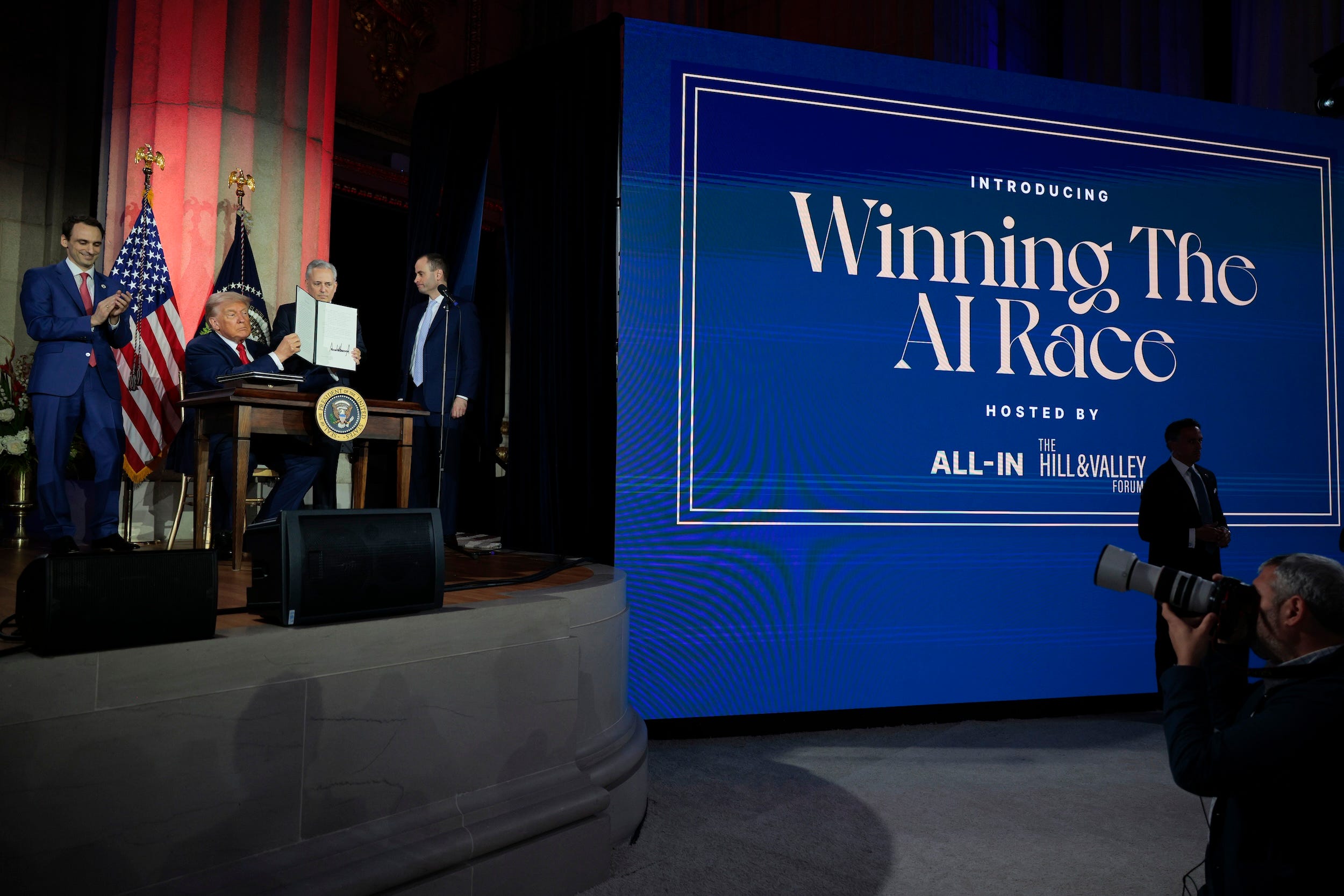
Chip Somodevilla/Getty Images
The AI capex spending race is so massive that it’s lifting up the entire US economy.
Researchers at Pantheon Macroeconomics found that AI-related spending accounted for a 0.5 percentage point difference in annualized GDP growth for the first half of the year. Without AI spending, Pantheon estimated the US economy would have grown at less than 1%, a sign that tech companies are propping up a not-so-great economy.
“Hidden behind the surge in AI-related spending, however, investment elsewhere in the economy is far softer than headline numbers suggest,” Samuel Tombs, Pantheon’s chief US economist, and Oliver Allen, Pantheon’s senior US economist, wrote in their recently published report.
Tech companies don’t appear to be slowing down their spending anytime soon.
Amazon, which spent $48.4 billion on capital investments in 2023, is set to more than double that amount this year. Google raised eyebrows with its pledge to spend an additional $10 billion. Microsoft recently reported that it too pledged to push capex spending ahead of analyst expectations. Even Apple, often regarded as the most frugal of the bunch, is exceeding its previous spending rate.
“Big tech’s plans to continue spending aggressively on AI over the next few years suggest a similar boost over the rest of 2025 and into 2026,” the analysts wrote.
Top CEOs, including Nvidia’s Jensen Huang, have praised President Donald Trump’s AI plan, which aims to further fuel investments in US spending.
As Business Insider previously reported, data center construction is skyrocketing. Beyond the sheer costs of construction, there are also significant expenditures related to the large amount of energy and water needed to power and maintain the data centers.
According to Pantheon’s research, spending on software is what’s really accelerating a big part of the GDP boost. Data center construction and energy spending are solid but not enough to “shift the dial” in the way software and, to a lesser extent, equipment-related spending have done so far. Since the US imports 80% of computer equipment, spending on it has a lesser net effect on GDP, where imports count against growth.
“We had thought the leap in tech equipment investment in Q1 mostly reflected a rush of pre-tariff purchases, but it held onto its gains in Q2 as imports of other goods retreated, suggesting a persistent climb,” the analysts wrote.
Pantheon’s report focused on fixed investments such as computer and communications equipment, and the centers, leaving out the other part of the AI race: talent. Led by CEO Mark Zuckerberg, Meta is reportedly trying to poach top AI researchers with $100 million offers.
The flip side of the AI spending, the researchers wrote, is the softer economy behind it. Pantheon’s analysts said that pricing data show that retailers and wholesalers continue to be squeezed by tariffs.
Their findings dovetail with recent comments by top CEOs, which indicate that major companies like Walmart and Nike have already or will soon raise their prices. July’s disappointing jobs report only heightened concerns that the labor market could be weaker than we previously thought.
Panethon concludes that the overall softer economy will lead the Federal Reserve to cut rates soon. To Trump’s frustration, the central bank has so far kept rates steady amid Fed Chair Jerome Powell’s wait-and-see approach.
The post The AI spending boom is boosting US GDP — and potentially hiding looming problems appeared first on Business Insider.




